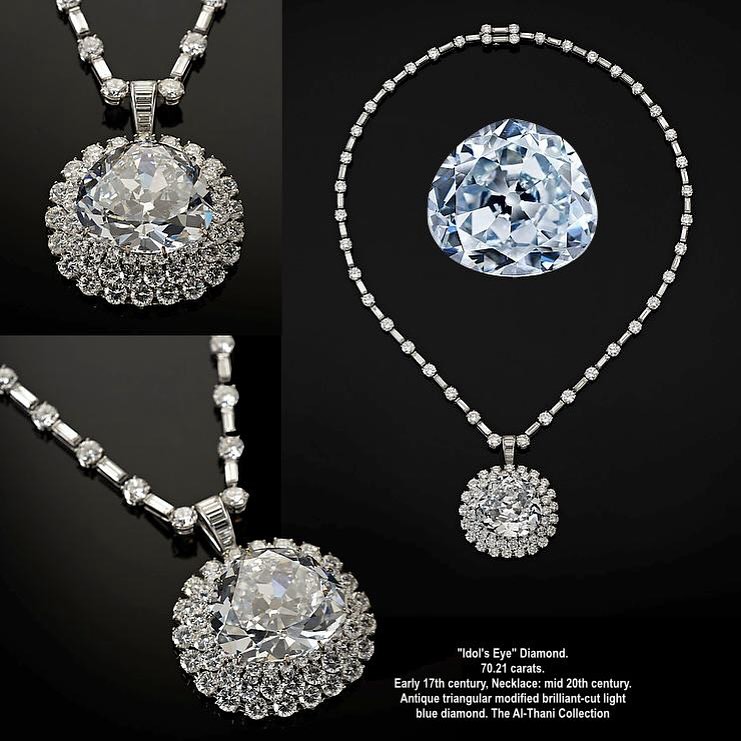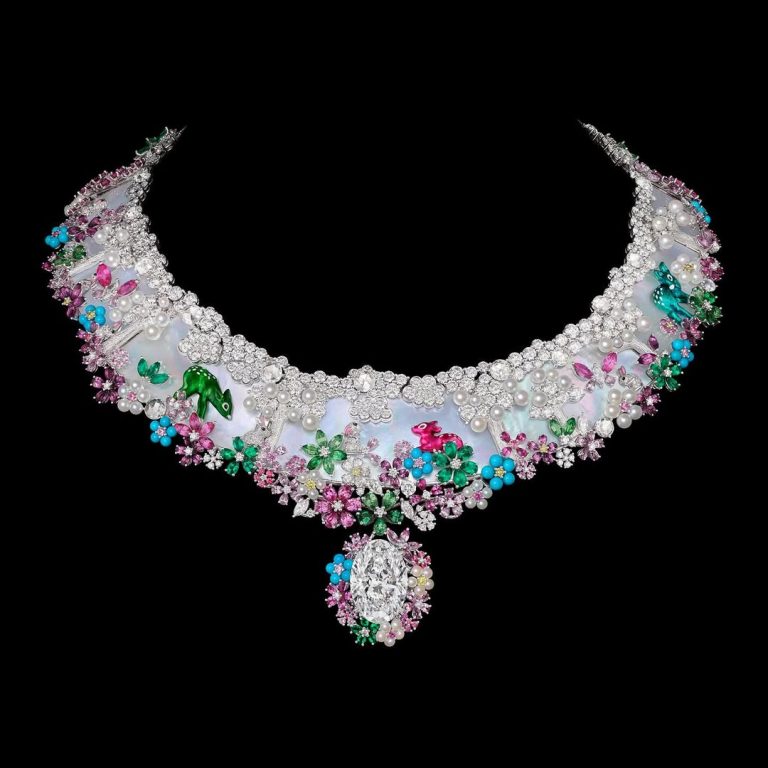In a dramatic courtroom showdown, the long-standing legal battle over the Idol’s Eye—one of the world’s most storied diamonds—has finally reached its conclusion. Last Thursday, a London judge ruled that the legendary 70.21-carat blue diamond will remain in the possession of the family of Sheikh Saud bin Mohammed bin Ali Al Thani, the late Qatari culture minister.
The ruling rejected claims by Sheikh Hamad bin Abdullah Al Thani, a prominent London-based art collector, who argued that he had the rightful claim to purchase the gem.
But the Idol’s Eye has always been more than just a diamond—it is a relic of intrigue, entangled in a history of royal betrayal, secrecy, and high-stakes disputes. Let’s trace its extraordinary journey through time.
The Enigmatic History of the Idol’s Eye

The Idol’s Eye has captivated collectors for centuries, with origins tracing back to the Golconda Sultanate of southern India in the early 1600s. Renowned for its exquisite, very light blue hue, the diamond has been enshrined in myth and historical intrigue.
According to one legend, the gem once belonged to Prince Rahab of Persia, who, drowning in insurmountable debt, was forced to surrender the diamond to his creditors. While this tale remains unverified, the diamond’s documented history begins on July 14, 1865, when it was auctioned at Christie’s in London. The winning bidder, Ottoman Sultan Abdul Hamid II, added the Idol’s Eye to his collection of imperial jewels.
However, history took a fateful turn when the Turkish Nationalist Revolution led to the abolition of the Ottoman Sultanate. Forced into exile, Sultan Abdul Hamid II fled with his most treasured possessions, including the Idol’s Eye. But betrayal awaited him—on July 24, 1909, a trusted servant sold the diamond in Paris, robbing the deposed Sultan of one of his most prized gems. The diamond then vanished into private ownership, eventually surfacing in the hands of an enigmatic Spanish aristocrat, whose identity remains largely unknown.
Following World War II, the Idol’s Eye changed hands once more, entering the legendary collection of Harry Winston. It later passed to May Bonfils Stanton, a Denver philanthropist renowned for her passion for rare gems. Upon her passing in 1962, the diamond was acquired at auction by Chicago jeweler Harry Levinson, further cementing its status as one of the world’s most coveted diamonds.

The Qatari Royals’ Fierce Battle for the Idol’s Eye
Fast forward to the 21st century, and the Idol’s Eye became entangled in yet another high-profile dispute—this time within the Qatari royal family. Sheikh Saud bin Mohammed bin Ali Al Thani, an esteemed collector and former culture minister of Qatar, had acquired the diamond in the early 2000s.
However, Sheikh Hamad bin Abdullah Al Thani, a London-based Qatari art collector, later asserted that he had a contractual right to purchase the diamond from Elanus Holdings, a company controlled by Sheikh Saud’s family foundation. Citing a 2014 agreement, Sheikh Hamad claimed that Elanus had granted him the first option to buy the Idol’s Eye should it ever be put up for sale.
The opposing side, however, refuted these claims, arguing that no legitimate sale had ever been initiated. They maintained that a 2020 letter suggesting the diamond was available for purchase had been misinterpreted and did not constitute a binding commitment.
The Final Verdict: Who Gets to Keep the Idol’s Eyes?

After intense legal arguments, London’s High Court ruled in favor of Elanus Holdings on February 13, 2025. Judge Simon Birt KC concluded that Sheikh Hamad had no legal grounds to compel the sale of the Idol’s Eye. The court determined that the letter in question did not constitute a binding agreement, ensuring that the diamond would remain with the family of Sheikh Saud.
Following the ruling, Sa’ad Hossain KC, the lawyer representing Elanus, emphasized the diamond’s sentimental significance during Sheikh Saud’s lifetime. He stated:
“The Idol’s Eye was kept in the personal safe of Sheikh Saud at his London home. It was one of the most significant pieces in his collection and one of the pieces he was most proud of.”
This verdict not only settled the familial dispute but also cemented the Idol’s Eye as a treasured heirloom within Sheikh Saud’s family. Its remarkable journey through history remains as captivating as its luminous facets.
Featured image: Met Museum

Sewelo is a world where jewelry, watches, and objects come alive in a shimmering dance of fantasy. Through a literary lens, we celebrate the beauty and elegance that make these treasures more than just possessions.




